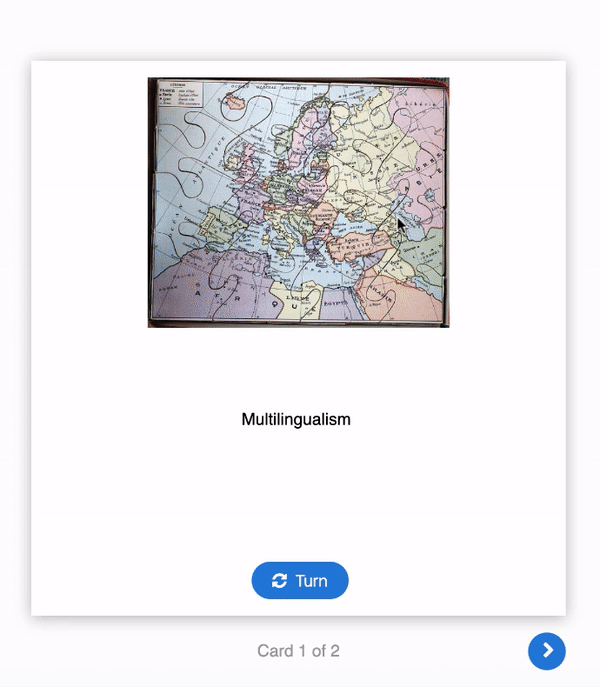Victoria Surtees is a lecturer and course developer at the Department of Language and Literacy at the Faculty of Education. She teaches and develops courses and workshops in the TESL Certificate program and the Ritsumeikan Program, as well as teaching in the BEd program. With a career inspired by her love of language, Victoria has broad experience as an educator and researcher in second language acquisition and internationalization, and as an online course developer.
Specifically within the Online MEd in TESL cohort, Victoria designed and developed the online version of the first course to be offered within the program – LLED 489B: Applied Linguistics for Teachers. Since then, she has gone on to design an online academic literacy module called “General Orientation to Academic Life”, which uses an increased number of impressive digital interactions created through H5P and Qualtrics to introduce new Japanese students in the Rits cohort to UBC and UBC practices. With technological support from ETS in the use of H5P, Victoria prioritized digital interaction, along with representation and multimodality, when designing all the online content for her courses.
Read on to hear Victoria speak about her background and experience in online learning design and teaching international audiences.
Let’s start with some background information – what did you study and what lead you to teaching and lecturing at the department of language and literacy?

VS: Going way back – I was a French immersion student, and I loved it. I also did German and Spanish; I did all sorts of things in my undergrad that were related to language, including a study abroad year in Lyon, France. I fell in love with the city so I ended up going back. I got sucked into the world of university teaching at that point. I taught for several years at universities, just with a bachelor’s degree. I actually started designing materials for online learning there. They had online modules for English language learners, and I got to design content for those.
I then came back to Canada to do my Masters at Concordia. I decided to go for applied linguistics, which is basically language teaching. I did courses in computers and language learning there as well, and I also designed a module for training Francophone nurses in English. It used embedded speech recognition technology, which was super cool. I designed, filmed, uploaded, programmed, and did everything for that.
So that’s my background! These days, I’m mostly about second language acquisition and learning, and internationalization– those are my two big areas. For the past seven years, I have been teaching in the TESL certificate program, the Ritsumeikan Program, and the BEd.
You mentioned your background in study abroad and international studies – did that inspire your interest in online learning as a way to reach a broader audience and improving distance education?
VS: No, I think my interest in online learning is related to my interest in design. International students have diverse needs and when designing content, it’s important to anticipate those needs and embed support because as a teacher you only get to see what they do online, whereas when you’re in the classroom you can see if they’re looking panicky or confused – you can invite them to office hours and such. You can’t do that as easily online.
Would you say that is the greatest challenge you’ve had with online teaching?
VS: I’d say the greatest challenge is the variability in the amount of skill of the students in terms of navigating online learning. Understanding where they’re at and then on the fly trying to develop support to help them figure it out, I’d say that was the bigger challenge.
Have you noticed any benefits to teaching international students online versus in the classroom?
VS: There’s the flexible learning benefit – they don’t have to be here at UBC. I find that for me, by reading their written posts, I can really take the time to reflect on things. Sometimes in the classroom when you have international learners or people who are not necessarily comfortable speaking out, they’ll be a lot more comfortable writing something in a post. It also means they can come back as many times as they want to look at things.
Talking about the LLED 489 course specifically, what was your process in developing that course and deciding which learning technologies to implement? Especially since you were the first to work on an online course for that cohort.

An interactive timeline of teaching approaches designed for LLED489B
VS: The goal of the program was supposed to be so people could do it after work, and they shouldn’t have to be at their computers at a particular time, so all components had to be asychronous. The modules also had to be calculated similarly to a face-to-face course, so thirteen modules for thirteen weeks. Those kinds of structural components were already built in, but I had a couple of principles that I attacked it with, the first one being to make sure that the objectives for each module were clear. In my course there’s a front page for every module that has the objectives, and reflection questions at the end. Another important component is that I wanted to create an actual community where they taught each other because they all have tons of experience, some have 30 years or more teaching experience! So I think for them it’s just as enriching to listen to each other. For that reason I decided to have them make three minute videos where they actually taught the content to each other every week, which was actually really hard because it was their very first course using and learning Canvas, and they also had to learn how to make a video, so there were some challenges there. But I think ultimately it was a really successful part of the course. Another part of my design process was that I wanted to include scaffolding for literacy, and particularly academic literacies within my course (finding online papers, APA, etc.). I integrated those skills because I knew it was the first course they would take. For the selection of readings, images, and videos, representation was a really big principle for me. I feel especially in English language teaching there’s a huge bias towards white native English speakers, and that’s a big problem. So for me, it’s really important to include scholars from different parts of the world, and Indigenous perspectives. That was important to me as a principle of design from the outset when I was making the curriculum.
What was your method for implementing digital interactions throughout the course?
Click below to listen to Victoria speak about the pedagogical use of digital interactions and H5P in her courses.

Digital flip cards designed in H5P by Victoria
Was this your first time using H5P?
VS: Definitely, but I didn’t find it that challenging to do. For every page I try to include something interactive. Or I try to break it up into some sort of multimodal component, whether it’s an image or an H5P activity or a video – I always try and include something. I don’t think there is any page, except the objectives pages, that are just text.
Did you get any student feedback on the course design and learning technologies used?
VS: I embedded an anonymous survey into the course – and I’d recommend this to anyone teaching a course for the first time – about how many hours students were spending a week doing the course and the kind of workload they had to get a sense of the student experience.
Since it’s the first class that that cohort takes, naturally you’re going to have way more problems and questions about technology in that course than you will in any of the other subsequent courses! I think it also kinda means that it’s natural that there is going to be some frustration and a little bit of a learning curve.
For LLED 489B, I took a lot of risks and some of them paid off and some of them didn’t!
But to summarize, representation, multimodality, interaction – those are all design principles that drive my approach.
Interested in using H5P in your course? Contact ETS at 604-822-6333 or email us at ets.educ@ubc.ca to learn more!